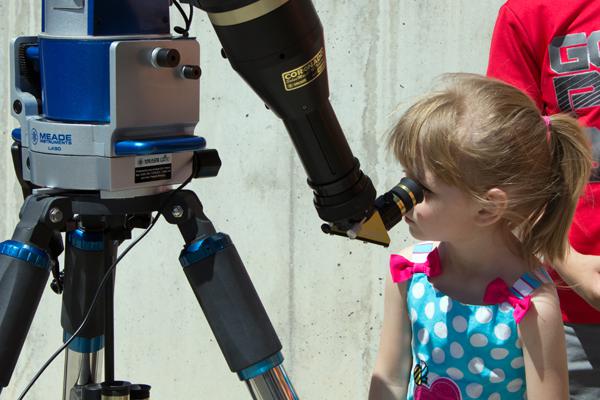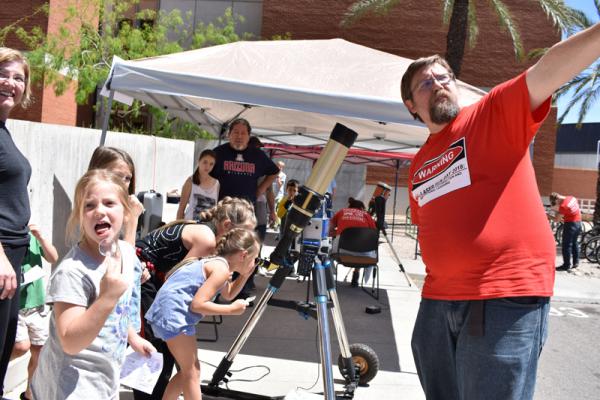Solar Telescope
Overview: The sun is our closest star and is very active. It goes through 11 year cycles of being very active and less active. What do we mean by active? The peak of an active cycle will show to observers multiple sun spots and prominences occurring all the same time. With a telescope and special filters that protect our eyes, we can observe these features.
Supplies: Solar telescope, battery for operating mount
Objectives: Observe activity and changes in the sun’s surface
Setup:
CAUTION: This telescope has filters allowing us to view the sun safely, but be sure to remind participants to not look at the sun with the naked eye!
- Align the front wheel to roughly north. Use a compass on a phone to get the rough position.
- Open deck and azimuth(arrow on silver deck) locks and rotate telescope until azimuth arrow is aligned with front wheel and north arrow. Rotate the telescope until the telescope is parallel to the ground.
- Lock in azimuth and deck
- Remove the lens cap
- Follow the directions on the controller.
- Unlock azimuth and deck.
- Then manually line the telescope up with the sun using finder scope.
- Look through the eyepiece to make sure the sun is centered.
- Lock azimuth and deck.


How to run the demo:
There are two filters; through one you can see sun spots better, and with the other you can see prominences better. Flip through the two for each person (the lever for filters is located 90 degrees from the finder scope)!
Note that the telescope will need to be realigned every 2-5 people by using the arrows on the controller.
What’s Happening?
The solar telescope has a special filter that allows us to look at the sun safely (remember: it is never safe to look at the sun with the naked eye!). Two different features that you may see on the sun are:
Sun Spots:
- Temporary phenomenon in photosphere that appear darker than surrounding area
- Regions of reduced surface temp that inhibit convection because of concentrated magnetic field flux
- Spots can last from a few days to a few months
- Range in size from 16 km to 160,000 km
Prominences:
- Prominences and flares are different
- Prominence is an arc of gas erupting from the Sun’s surface
- Can loop hundreds of thousands of miles into space
- Held above the Sun’s surface for many months by magnetic fields

